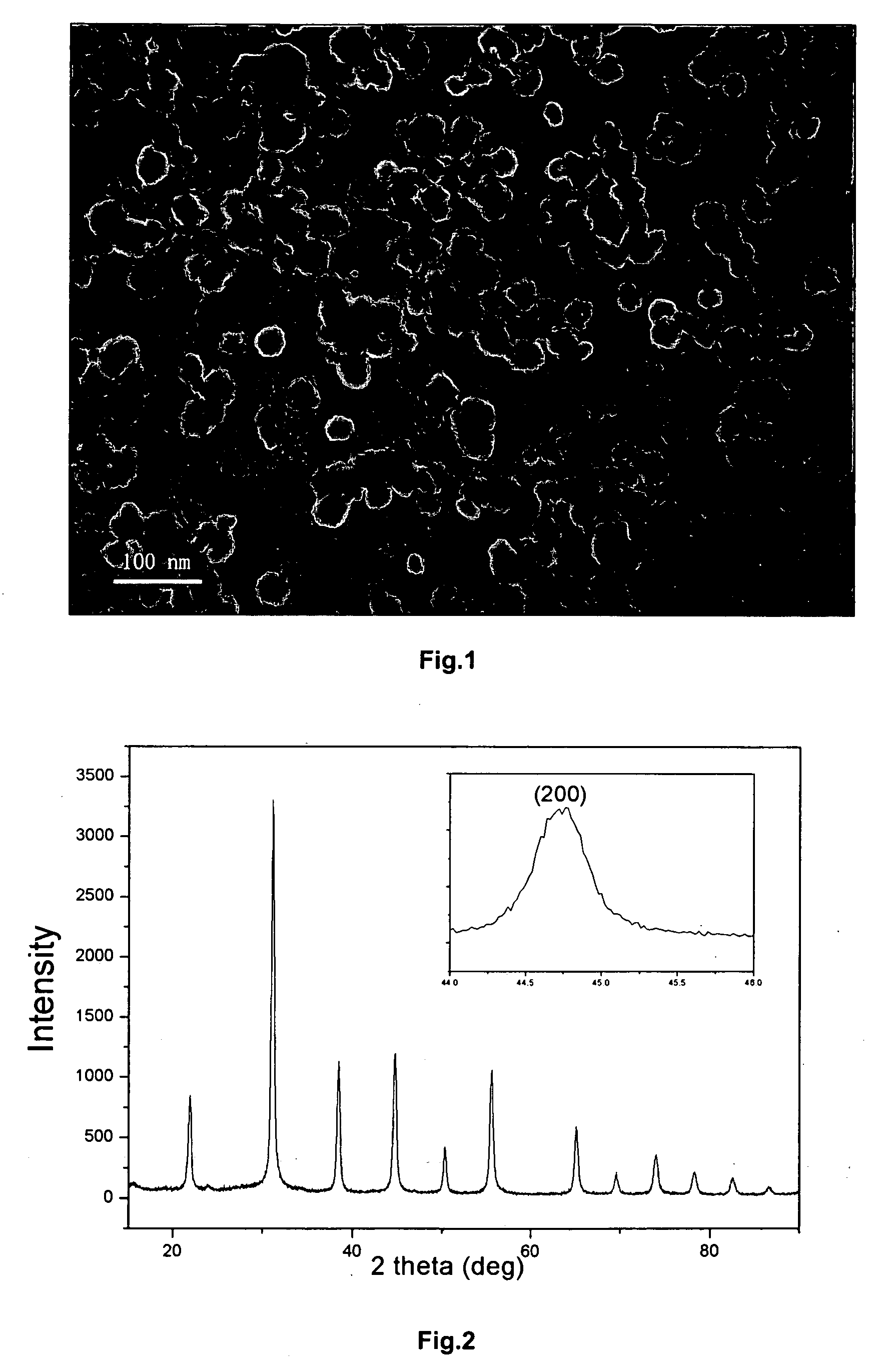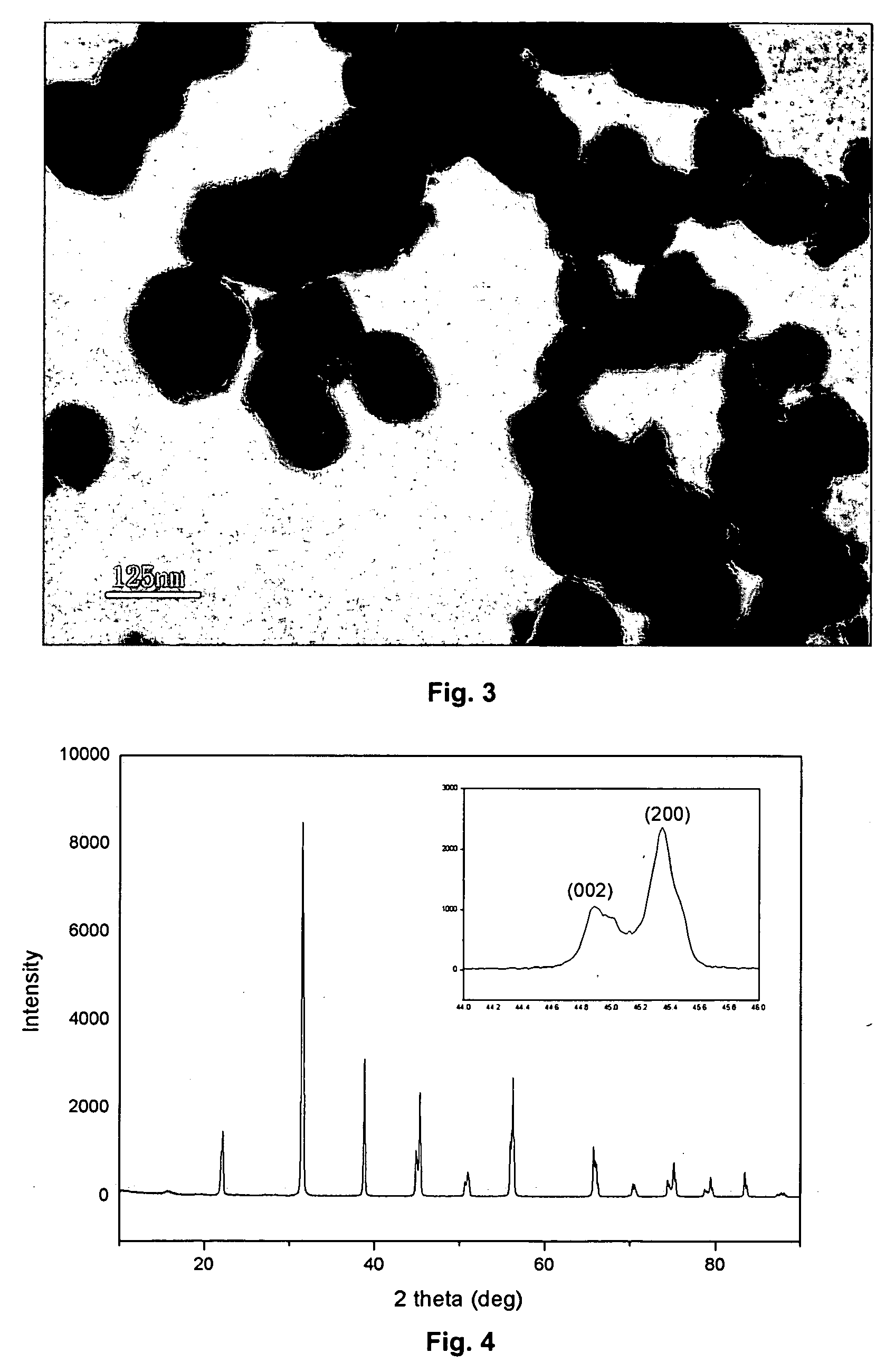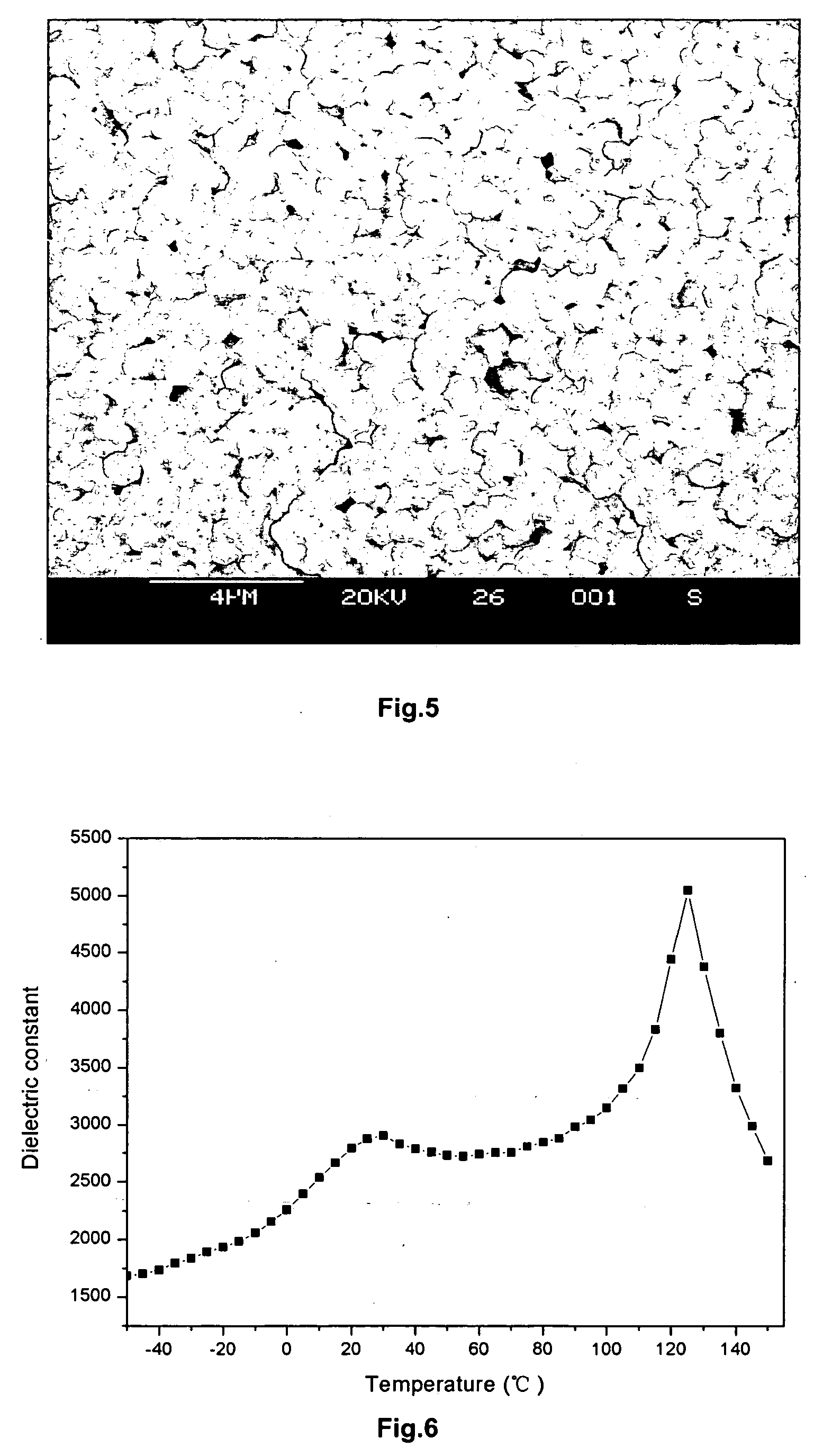High-gravity reactive precipitation process for the preparation of barium titanate powders
- Summary
- Abstract
- Description
- Claims
- Application Information
AI Technical Summary
Benefits of technology
Problems solved by technology
Method used
Image
Examples
example 1
Barium Titanate Powders by the High-Gravity Reactive Precipitation (HGRP) Process
[0054] The preparation of barium titanate powders is carried out according to the flow chart as showed in FIG. 7.
[0055] An aqueous solution (I) of barium and titanium is obtained by mixing 1 mol / L solution of BaCl2 and 2.5 mol / L solution of TiCl4. The final volume is adjusted to 15L, using deionized water. The total concentration of the BaCl2 and TiCl4 solution is 1.025 mol / L, while Ba / Ti molar ratio is kept at 1.5.
[0056] 3000 g of NaOH (analytical grade) are added to 12.5L of deionized water with stirring to give 6 mol / L aqueous solution (II) of NaOH.
[0057] 15L of the solution (I) is preheated to a temperature of about 60° C. and then pumped by pump (6) from cylinder (5) through flow gauge (7) and liquid inlet (3) at a flow rate of 90 L / h into the RPB reactor (4), and at the same time, 12.5L of the solution (II) is preheated to a temperature of 90° C. and then pumped by pump (10) from cylinder (1) ...
example 2
[0064] Example 1 is repeated, except that the as-prepared barium titanate powders are calcined at a temperature of 1000° C. for 2 hours.
[0065] A microphotograph of the thus-obtained barium titanate fine powder by a TEM is shown in FIG. 2 and the X-ray diffraction pattern thereof is shown in FIG. 4.
[0066] In FIG. 4, a separation of peaks for (200) plane and (002) plane is observed, and accordingly it is understood that the powder is tetragonal barium titanate.
[0067] The results indicate that the cubic BaTiO3 powders produced by the HGRP process can be transformed to tetragonal phase at high calcining temperatures without excessive particles growth. The average particle size of the obtained powder is 150 nm.
example 3
[0068] A series of experiments are carried out in the RPB reactor to examine the effect of the high-gravity level NG of the rotator in the rotating packed-bed reactor on the particle size of the obtained powders.
[0069] Example 1 is repeated, except that the high-gravity level varies from 31.25G to 3125G. The resulting particles are treated same as in Example 1.
[0070] The average particle size of the obtained powder decreases from 200 nm to 25 nm, with the high-gravity level of the RPB reactor increasing from 31.25G to 3125G, while the other characteristics are same as those obtained in Example 1.
PUM
 Login to View More
Login to View More Abstract
Description
Claims
Application Information
 Login to View More
Login to View More - R&D
- Intellectual Property
- Life Sciences
- Materials
- Tech Scout
- Unparalleled Data Quality
- Higher Quality Content
- 60% Fewer Hallucinations
Browse by: Latest US Patents, China's latest patents, Technical Efficacy Thesaurus, Application Domain, Technology Topic, Popular Technical Reports.
© 2025 PatSnap. All rights reserved.Legal|Privacy policy|Modern Slavery Act Transparency Statement|Sitemap|About US| Contact US: help@patsnap.com



